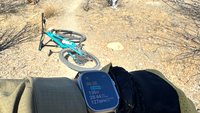
Kashmir
I step off the over-crowded bus into yet another frenzied Indian city. City workers, beggars, stray dogs and sacred cows fight for space on the busy streets. Its only six am but its already hot. As quick as I can I find my seat in a shared sumo taxi to begin the final part of my journey to Kashmir.
********
Having spent the last five years snowboarding Gulmarg my desire to ride the roots and rocks in summer became a reality. In 2010 I set up Gravity Assault Tours LTD, a mountain bike tour company taking clients to ride downhill and freeride in the North Indian Himalaya. I travelled to Kashmir and found myself riding where no bike had ever been taken before – Mt Apharwat, 10km from the Line Of Control (LOC) on the Indian/ Pakistan border.
I had planned a few weeks of trail research but ended up staying 3 months. Within 3 days of arriving I was working alongside Gulmarg Development Authority (GDA) to begin design and construction of a new MTB resort.
MTB has taken off in a big way with the local kids in Gulmarg. The 20 Trek bikes that the GDA had invested in were trashed within a month. Mainly hired to the local pony wallah kids. They had MTB skills bred into them from years of horse riding but no knowledge of maintenance, and the terrain was hard. The authorities are now part sponsoring these families to help them be part of the new adventure tourism business that is currently booming in Gulmarg.
Gulmarg meadow is a quiet, open space with flowers blooming everywhere you ride. The amount of rideable terrain is mind blowing, numerous trails that have never seen rubber descend from the small ski resort into traditional Kashmiri villages below. Steep lines and roots send you flying down the raw tracks, just got to watch out for those pesky snow leopards.
My first run was with a group of local guys I’ve known for years. Dropping down from the main meadow to Baba Reshi Shrine, one of the steeper lines on the lower terrain. This being their first freeride experience I encouraged them to be cautious. I couldn’t hold them back, they took to the bikes like ducks to water, and were instantly hooked. Flying down the raw trail went one Welshman and four Kashmiris. We reached the Baba Reshi Shrine where I believed the trail finished, only to be told we could carry on to the next village seven km down. The trail mellowed out but was still a good downhill track that led us through ancient forests and fruit orchards. We gorged ourselves on cherries, later I was reminded that bears love cherries too.
With their help I managed to get funds put in place to begin building Gulmarg’s first dedicated MTB trail. I worked purely as a volunteer trying to encourage our friends to see the potential and show them what needs to be done to entice bikers here in the summer as well as the thousands of skiers in winter.
Weeks of trail research had to be carried out, along with obtaining the necessary permission. Firstly we needed backup from the authorities to ride the terrain, secondly we needed the Gondola management to allow bike use and thirdly we needed permission from the military to drop off the top of the mountain. In winter the skiers can almost go where they like as long as they drop in back towards India and not Pakistan. We needed to get similar attitudes towards summer riders.
Eventually, permission in place, it was time to hit the peak. For the first few km I traced the ridge of Apharwat, feeling the raw buzz from riding virgin terrain, only to be stopped once more by Indian military requesting an ever longer list of letters to assure them I wasn’t a militant. Being unable to continue where I wanted, I drop in where I am. The first section definitely needed the safe travel backcountry attitude that is essential if you want to ride another day, it was not ideal but some times you’ve got to assess the risk and grow a pair. I could see the trail cutting back across the face and decided to go for it. The supreme sucked it up and 250m vertical later I hit the trail, rocks, dirt and panoramic himalayan views came into sight. Another 1200m vertical brought me to the mountain base.
The GDA had asked me to log all trails in the area, an almost impossible task for one person, as well as starting trail construction. It took weeks to organize but I woke one day to find 20 flipflop wearing Burmese refugees waiting outside my door, ready to begin work.
With next to no tools, very limited time to complete the job and a huge language barrier the task ahead seemed immense. We broke ground that day, progress was slow considering the number of workers but they had no idea of what we were making.
“What is berm?”
The only way was to show them, into the deep red soft dirt went our hands and tools. It was a good day.
The trail – named ‘Khilmish’ after a berry shrub that lines a lot of the track – starts at the mid station 3050m. The line had to fit into the current chaotic trail system used by the pony wallah’s. Having naturally developed over time the trails are in no way organized. I needed to show the locals that dedicated mtb trails with no risk of rearing hoofs was essential.
Every day for eighteen days we grafted, working our way down. We always knew that we couldn’t create a whole resort for these guys and we needed to show the GDA that the local boys had the skills to do this on their own as well as creating jobs. We were working with the most dedicated local rider Sajeed Dar (Tiger to his friends), the plan was to hand the trail work over to him and he would manage the workers.
He finished the last 500m on his own and came up with some creative lines. Tiger has been continuing the surveying work and the GDA have promised their commitment to establishing more trails next year. It was a promising summer, I never expected for the local authorities to pick up on it so quickly. I only ever intended to see what was possible and to encourage our local friends to think about mountain biking as a sport, a job creator and a future for the younger generation. A future without conflict. This was just the beginning, a taster of what could be done.
********
Kashmir has had a history of problems, beginning with partition of India and Pakistan in 1948. It has remained disputed territory and has since seen sporadic conflict between the Indian military and militants and separatists. The last twenty years has seen a resurgence in protest movements, with the majority of Kashmiri’s wanting independence. Generations of young men have become involved and lost their lives due to the conflict. However in recent years Kashmir has seen a growth in tourists numbers, with foreigners once again visiting the state. Last year Germany’s official advice was that Kashmir was a safe place to travel.







Comments
Please log in to leave a comment.